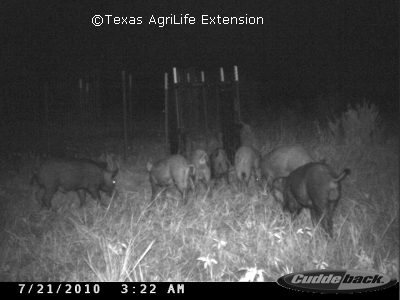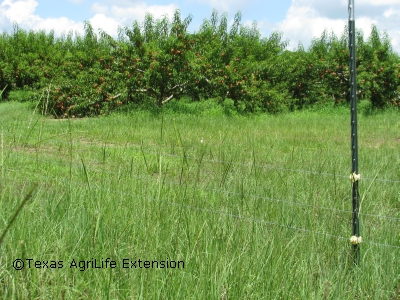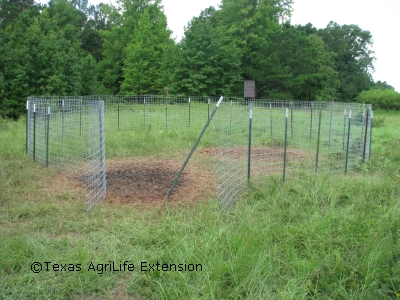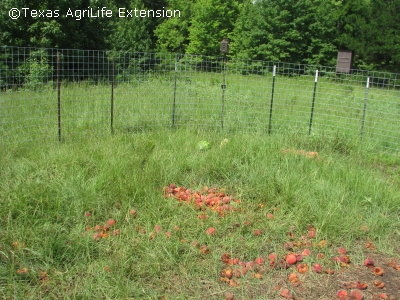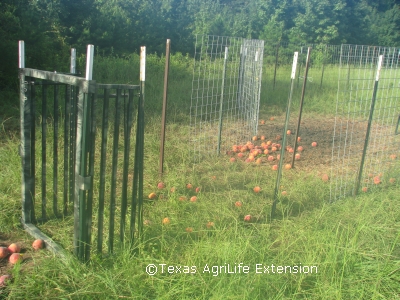“Feral Hogs Don’t Own Calendars”
Now that we have an idea of how many hogs are visiting the bait site at any one time (about 12 to 15 hogs maximum in one photograph), it’s time to begin Phase II, trap construction. Several tips to consider on trap construction include:
* Tear-drop shape to facilitate loading hogs into a trailer for transport to a buying station
* Seven panels 16 feet long, 4 inch square mesh and 60 inches high placed flush to the ground—no gaps allowed!
* T-posts spaced at 4 to 5 foot intervals maximum and panels secured with heavy wire at the top, middle and bottom. Panels are overlapped 1 to 2 mesh panels with t-posts placed at each overlap.
The trap frame was put into place on Sunday, July 18. Notice that the gate has not been setup at this time and the panels adjacent to the gate were held open to increase the hog’s access to the inside of the trap. Heavy baiting with over-ripe peaches continued outside and immediately inside the trap opening. The remote camera was also relocated to the back of the trap facing back towards the gate opening. This is a critical location to photograph as it will document how far the hogs are venturing into the trap—key information to determine when it’s time to set the gate to catch. Just for fun, a second camera was placed in front of the trap facing the opening. On Tuesday July 20, several t-posts were set in a line inside the trap to support the trip wire. The gate was also set in place and wired open but a gap (about 6-8 feet on either side) was left between the ends of the panels and the gate itself in order to maximize the space hogs had to enter and feed within the trap. An eighth panel will be necessary to close the gap on each side of the gate. At this point, the peach producer was getting a bit jumpy –“Can we set the trap to catch by this Friday”? “Feral hogs don’t own calendars” was the reply he received—the camera data confirmed limited use of bait placed at or just inside the trap opening. It was obvious that the pigs that had been feeding…well, like “hogs at the trough” prior to trap construction were now wary of the trap’s presence. Patience is a virtue when it comes to trapping and relying on the camera data meant a continued chumming effort as of Thursday, July 22. Once the hogs resume a regular feeding pattern and enter deep inside the trap, the panels will be attached to the wired-open gate– forcing them to come and go through the smaller entrance. Remember, trapping is a process………..Stay tuned!
